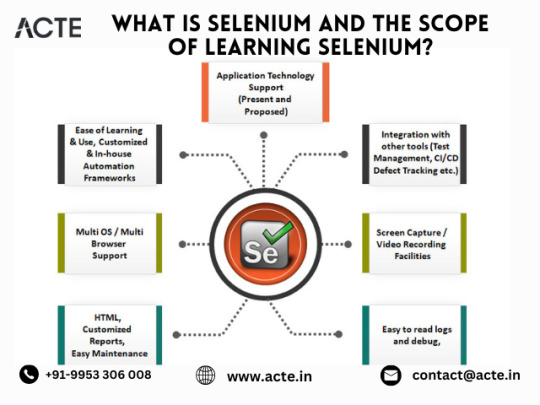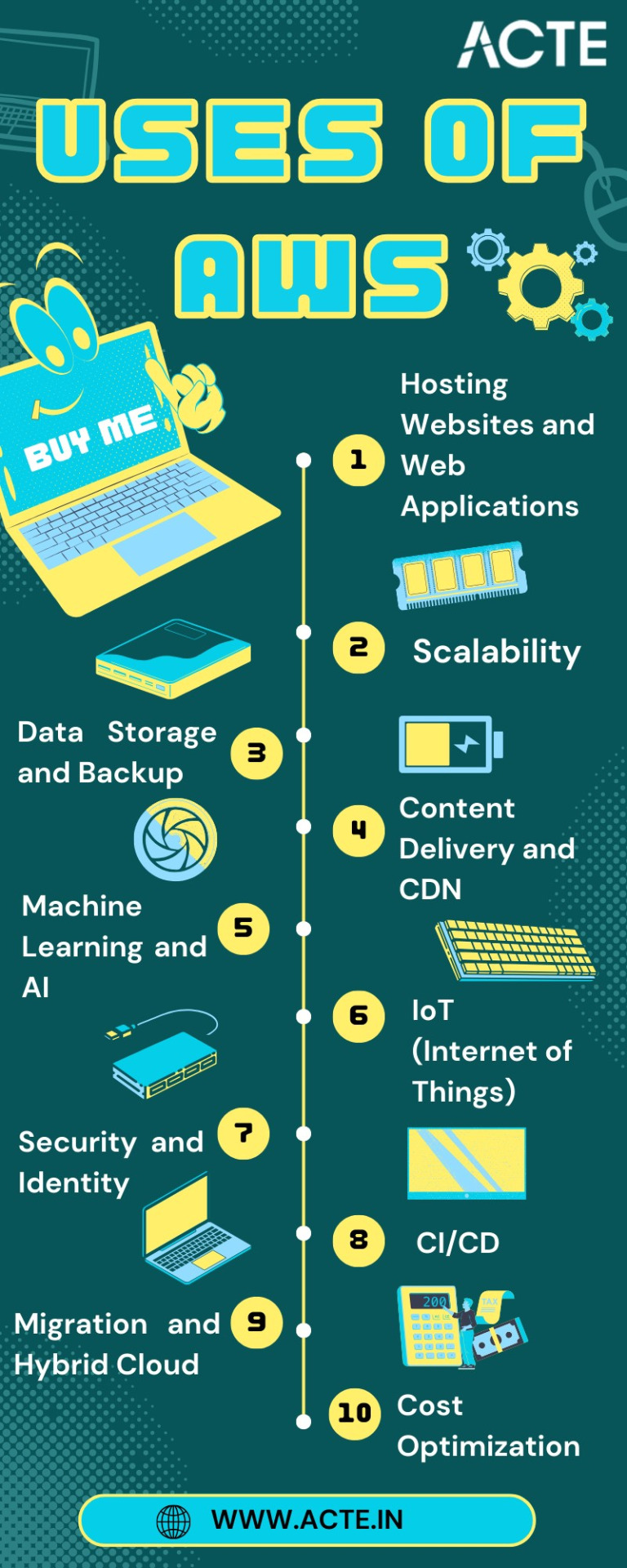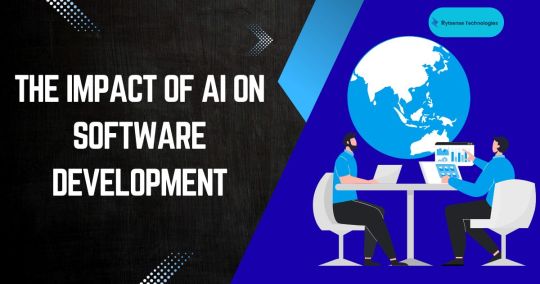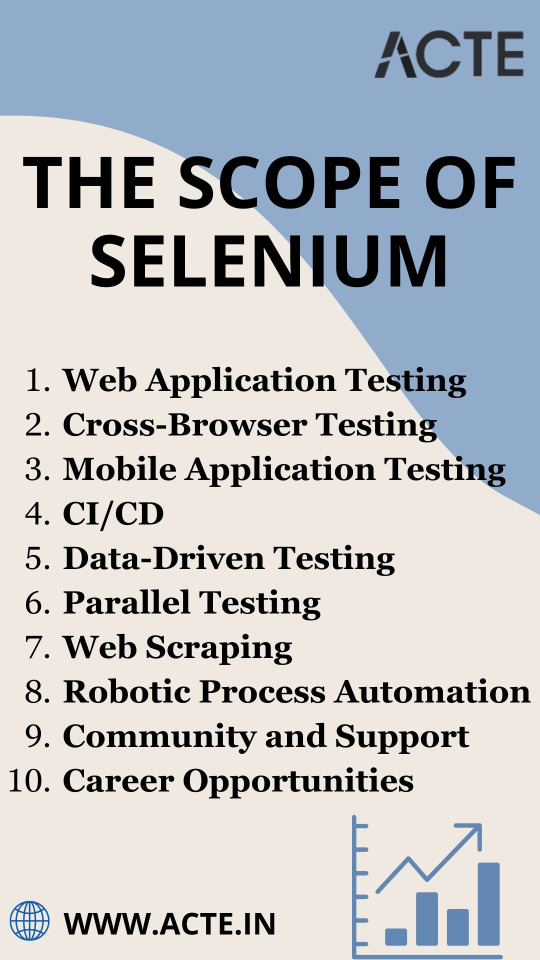#Harness CI/CD Tool
Explore tagged Tumblr posts
Text
What Is Harness in DevOps? A Game-Changer for Continuous Delivery and Deployment- OpsNexa!
Learn about Harness in DevOps and how it automates the continuous delivery and integration process. What Is Harness in DevOps? Discover the key features of Harness, including automated deployments, verification, and monitoring, and understand how it simplifies DevOps workflows and accelerates software delivery.
#Harness DevOps#Harness CI/CD Tool#Harness Deployment Automation#DevOps Automation Platform#Continuous Delivery with Harness
0 notes
Text
Azure DevOps Training
Azure DevOps Training Programs

In today's rapidly evolving tech landscape, mastering Azure DevOps has become indispensable for organizations aiming to streamline their software development and delivery processes. As businesses increasingly migrate their operations to the cloud, the demand for skilled professionals proficient in Azure DevOps continues to soar. In this comprehensive guide, we'll delve into the significance of Azure DevOps training and explore the myriad benefits it offers to both individuals and enterprises.
Understanding Azure DevOps:
Before we delve into the realm of Azure DevOps training, let's first grasp the essence of Azure DevOps itself. Azure DevOps is a robust suite of tools offered by Microsoft Azure that facilitates collaboration, automation, and orchestration across the entire software development lifecycle. From planning and coding to building, testing, and deployment, Azure DevOps provides a unified platform for managing and executing diverse DevOps tasks seamlessly.
Why Azure DevOps Training Matters:
With Azure DevOps emerging as the cornerstone of modern DevOps practices, acquiring proficiency in this domain has become imperative for IT professionals seeking to stay ahead of the curve. Azure DevOps training equips individuals with the knowledge and skills necessary to leverage Microsoft Azure's suite of tools effectively. Whether you're a developer, IT administrator, or project manager, undergoing Azure DevOps training can significantly enhance your career prospects and empower you to drive innovation within your organization.
Key Components of Azure DevOps Training Programs:
Azure DevOps training programs are meticulously designed to cover a wide array of topics essential for mastering the intricacies of Azure DevOps. From basic concepts to advanced techniques, these programs encompass the following key components:
Azure DevOps Fundamentals: An in-depth introduction to Azure DevOps, including its core features, functionalities, and architecture.
Agile Methodologies: Understanding Agile principles and practices, and how they align with Azure DevOps for efficient project management and delivery.
Continuous Integration (CI): Learning to automate the process of integrating code changes into a shared repository, thereby enabling early detection of defects and ensuring software quality.
Continuous Deployment (CD): Exploring the principles of continuous deployment and mastering techniques for automating the deployment of applications to production environments.
Azure Pipelines: Harnessing the power of Azure Pipelines for building, testing, and deploying code across diverse platforms and environments.
Infrastructure as Code (IaC): Leveraging Infrastructure as Code principles to automate the provisioning and management of cloud resources using tools like Azure Resource Manager (ARM) templates.
Monitoring and Logging: Implementing robust monitoring and logging solutions to gain insights into application performance and troubleshoot issues effectively.
Security and Compliance: Understanding best practices for ensuring the security and compliance of Azure DevOps environments, including identity and access management, data protection, and regulatory compliance.
The Benefits of Azure DevOps Certification:
Obtaining Azure DevOps certification not only validates your expertise in Azure DevOps but also serves as a testament to your commitment to continuous learning and professional development. Azure DevOps certifications offered by Microsoft Azure are recognized globally and can open doors to exciting career opportunities in various domains, including cloud computing, software development, and DevOps engineering.
Conclusion:
In conclusion, Azure DevOps training is indispensable for IT professionals looking to enhance their skills and stay relevant in today's dynamic tech landscape. By undergoing comprehensive Azure DevOps training programs and obtaining relevant certifications, individuals can unlock a world of opportunities and propel their careers to new heights. Whether you're aiming to streamline your organization's software delivery processes or embark on a rewarding career journey, mastering Azure DevOps is undoubtedly a game-changer. So why wait? Start your Azure DevOps training journey today and pave the way for a brighter tomorrow.
5 notes
·
View notes
Text
Revolutionizing Quality Assurance: The Transformative Power of AI in Software Testing

In today’s dynamic software development landscape, delivering high-quality applications is non-negotiable. As user expectations soar, organizations must adopt innovative strategies to ensure robust, efficient, and reliable quality assurance (QA) processes. Artificial Intelligence (AI) is emerging as a pivotal force in software testing, redefining how teams approach quality assurance by enhancing speed, accuracy, and efficiency. This article delves into the evolution of QA, the transformative role of AI, and the remarkable benefits of tools like GenQE in revolutionizing software testing.
The Evolution of Quality Assurance
Traditionally, QA relied on manual testing methodologies. While effective to some degree, these processes often suffered from inefficiencies such as:
Prolonged Timelines: Manual testing is inherently time-intensive.
Human Error: Testers can overlook details, leading to missed bugs.
Limited Scalability: As software complexity grows, manual testing struggles to keep pace.
AI is shifting this paradigm. By leveraging machine learning and data analysis, AI-powered tools can process vast amounts of information, identify patterns, and predict potential defects. This shift allows teams to proactively address issues and adapt to the demands of modern, fast-paced development cycles.
AI in Software Testing
AI is more than just a buzzword; it is a catalyst for change in QA. Here’s how it enhances software testing:
1. Increased Efficiency
AI-powered testing tools execute repetitive tasks at unparalleled speeds, drastically reducing the time required for test cycles. This efficiency is crucial in agile and DevOps environments where quick iterations are key.
2. Enhanced Accuracy
Human errors in manual testing can lead to missed defects. AI minimizes these errors by automating processes and ensuring consistent results, yielding more reliable software.
3. Predictive Analytics
AI analyzes historical test data to forecast potential defects, enabling teams to take proactive measures. This capability leads to preemptive quality assurance, saving time and resources in the long run.
AI Strategies in Quality Assurance Testing
To fully harness AI, QA teams adopt strategies that integrate seamlessly into their workflows:
Automated Test Case Generation
AI tools like GenQE generate test cases based on application requirements, ensuring comprehensive and up-to-date coverage. This automation not only saves time but also adapts to evolving project needs.
Continuous Testing
AI enables real-time testing within Continuous Integration/Continuous Delivery (CI/CD) pipelines, fostering immediate feedback and rapid deployment cycles.
Smart Test Prioritization
AI assesses the risk of various components, prioritizing critical functionalities for testing. This focus ensures that high-risk areas are addressed early.
GenQE: Redefining Quality Assurance
At the forefront of AI-driven QA solutions is GenQE, a platform that exemplifies the potential of automation in software testing. Here’s what makes it a game-changer:
1. Automated Test Case Generation
GenQE automates the creation of test cases, eliminating manual overhead and ensuring accurate coverage even in large, complex projects.
2. API Validation and Security
The platform goes beyond functionality to include API validation and security checks, safeguarding applications against vulnerabilities.
3. Screen Flow Visualization
GenQE’s ability to visualize the flow between screens and features offers a holistic view of application behavior, enabling teams to identify potential issues early.
4. Seamless CI/CD Integration
With robust integration capabilities, GenQE automates testing at every development stage, maintaining consistent quality from start to finish.
Software Testing Automation Tools: The AI Advantage
Modern QA teams rely on tools that combine AI with automation to achieve new levels of productivity. GenQE is a prime example of how automation and AI converge to deliver unparalleled benefits:
Time Savings: Automates repetitive tasks, freeing QA teams to focus on complex scenarios.
Data-Driven Insights: Provides actionable analytics for continuous improvement.
Scalability: Accommodates projects of all sizes, making it accessible to startups and enterprises alike.
Conclusion
The integration of AI in quality assurance is not a fleeting trend—it is a fundamental shift shaping the future of software development. By automating repetitive tasks, enhancing accuracy, and enabling predictive analytics, AI empowers organizations to deliver superior software. Tools like GenQE exemplify how AI-driven innovation can streamline processes, improve outcomes, and ensure high-quality products.
As the technology evolves, so will its applications in QA, paving the way for smarter, faster, and more reliable testing solutions. For organizations striving to stay ahead in the competitive tech landscape, embracing AI in software testing is not optional—it’s essential.
1 note
·
View note
Text
Navigating the Realm of Selenium: A Comprehensive Handbook for Automated Web Testing
Introduction: Welcome to the dynamic world of Selenium, where precision meets automation, and web applications undergo meticulous scrutiny. As a cornerstone of modern test automation, Selenium empowers testers to streamline the testing process, ensure application reliability, and expedite software delivery. In this comprehensive handbook, we'll embark on a journey through the fundamentals of Selenium testing, uncovering its core components, essential concepts, and the vast realm of learning opportunities it presents.

Understanding Selenium: Selenium stands as a testament to the power of automation in testing, providing testers with an array of tools and libraries to interact with web elements, simulate user actions, and validate application behavior across diverse browsers and platforms. Its versatility and adaptability make it a go-to choice for developers and testers worldwide. Let's dive deep into the core components and pivotal concepts of Selenium.
Core Components of Selenium: Selenium comprises several pivotal components that form the backbone of automated web testing:
Selenium IDE: Acting as a user-friendly playground for recording, editing, and debugging test scripts, the Selenium Integrated Development Environment (IDE) offers testers a seamless experience in prototyping and generating test scripts, making it equally accessible to novices and seasoned testers.
Selenium WebDriver: At the heart of Selenium lies WebDriver, a robust programming interface enabling the creation and execution of automated tests. With WebDriver, testers can directly interact with web elements using a plethora of commands, ensuring seamless cross-browser compatibility and support across various programming languages.
Selenium Grid: Enabling parallel test execution across multiple browsers and platforms, Selenium Grid revolutionizes test efficiency and scalability. By distributing test scripts across different machines, Selenium Grid reduces test execution time, facilitating rapid feedback loops and expediting software delivery.
Essential Concepts of Selenium Testing: To harness the full potential of Selenium, testers must delve into essential concepts such as:
Web Element Identification: Mastering locator strategies (ID, class name, name, tag name, link text, XPath) is paramount for accurately identifying and interacting with web elements. A profound understanding of these strategies ensures the robustness and reliability of test scripts.
Test Automation Frameworks: Integrating Selenium with test automation frameworks like JUnit, TestNG, or NUnit enhances test organization, management, and reporting capabilities, streamlining test execution and fostering collaboration among team members.
Advanced Selenium Features: Exploring advanced features such as handling dynamic elements, working with iframes and pop-ups, and implementing wait strategies enhances proficiency in Selenium automation, enabling testers to tackle complex testing scenarios with finesse and precision.

Scope of Learning Selenium: The scope of learning Selenium is vast and diverse, offering myriad opportunities for skill development and career advancement. Here are some key areas to focus on:
Programming Language Proficiency: Attaining proficiency in programming languages supported by Selenium (Java, Python, C#, etc.) is pivotal for crafting efficient and maintainable test scripts, empowering testers to automate complex testing scenarios with ease and accuracy.
Cross-browser and Cross-platform Testing: Selenium's cross-browser compatibility allows testers to validate web applications across different browsers and platforms, ensuring consistent functionality and user experience. Learning how to perform cross-browser and cross-platform testing using Selenium enriches test coverage and ensures application compatibility.
CI/CD Integration: Integrating Selenium tests into CI/CD pipelines facilitates automated testing as an integral part of the software development lifecycle, enhancing test efficiency, accelerating software delivery, and improving overall software quality.
Conclusion: In conclusion, mastering Selenium unlocks a plethora of opportunities in automated web testing. By understanding its core components, essential concepts, and the vast scope of learning opportunities it offers, testers can enhance their skills, improve software quality, and expedite the delivery of high-performing web applications. Whether you're embarking on your Selenium journey as a novice or seeking to elevate your expertise as an experienced tester, embracing Selenium testing empowers you to navigate the complexities of modern software development and drive innovation in the digital landscape. So, embark on your Selenium journey today and embark on a transformative quest in automated web testing.
3 notes
·
View notes
Text
Navigating the DevOps Landscape: A Beginner's Comprehensive
Roadmap In the dynamic realm of software development, the DevOps methodology stands out as a transformative force, fostering collaboration, automation, and continuous enhancement. For newcomers eager to immerse themselves in this revolutionary culture, this all-encompassing guide presents the essential steps to initiate your DevOps expedition.

Grasping the Essence of DevOps Culture: DevOps transcends mere tool usage; it embodies a cultural transformation that prioritizes collaboration and communication between development and operations teams. Begin by comprehending the fundamental principles of collaboration, automation, and continuous improvement.
Immerse Yourself in DevOps Literature: Kickstart your journey by delving into indispensable DevOps literature. "The Phoenix Project" by Gene Kim, Jez Humble, and Kevin Behr, along with "The DevOps Handbook," provides invaluable insights into the theoretical underpinnings and practical implementations of DevOps.
Online Courses and Tutorials: Harness the educational potential of online platforms like Coursera, edX, and Udacity. Seek courses covering pivotal DevOps tools such as Git, Jenkins, Docker, and Kubernetes. These courses will furnish you with a robust comprehension of the tools and processes integral to the DevOps terrain.
Practical Application: While theory is crucial, hands-on experience is paramount. Establish your own development environment and embark on practical projects. Implement version control, construct CI/CD pipelines, and deploy applications to acquire firsthand experience in applying DevOps principles.

Explore the Realm of Configuration Management: Configuration management is a pivotal facet of DevOps. Familiarize yourself with tools like Ansible, Puppet, or Chef, which automate infrastructure provisioning and configuration, ensuring uniformity across diverse environments.
Containerization and Orchestration: Delve into the universe of containerization with Docker and orchestration with Kubernetes. Containers provide uniformity across diverse environments, while orchestration tools automate the deployment, scaling, and management of containerized applications.
Continuous Integration and Continuous Deployment (CI/CD): Integral to DevOps is CI/CD. Gain proficiency in Jenkins, Travis CI, or GitLab CI to automate code change testing and deployment. These tools enhance the speed and reliability of the release cycle, a central objective in DevOps methodologies.
Grasp Networking and Security Fundamentals: Expand your knowledge to encompass networking and security basics relevant to DevOps. Comprehend how security integrates into the DevOps pipeline, embracing the principles of DevSecOps. Gain insights into infrastructure security and secure coding practices to ensure robust DevOps implementations.
Embarking on a DevOps expedition demands a comprehensive strategy that amalgamates theoretical understanding with hands-on experience. By grasping the cultural shift, exploring key literature, and mastering essential tools, you are well-positioned to evolve into a proficient DevOps practitioner, contributing to the triumph of contemporary software development.
2 notes
·
View notes
Text
Explore Career Opportunities: The Importance of Selenium WebDriver Training"
In the rapidly evolving landscape of software testing, proficiency in Selenium WebDriver has become a key differentiator for professionals. Whether you're already in the field or aspiring to enter it, investing time in Selenium WebDriver training can significantly boost your career prospects. Embracing Selenium's capabilities becomes even more accessible and impactful with Selenium Training in Hyderabad. This training equips individuals with the skills and knowledge to harness the full potential of Selenium, enabling them to proficiently navigate web automation challenges and contribute effectively to their respective fields. Let's delve into the reasons why acquiring skills in Selenium WebDriver is essential for a successful career in software testing.

1. Industry Relevance:
Selenium WebDriver is not just another tool; it's an industry-standard for automating web applications. Its widespread adoption across various sectors makes it a must-have skill for professionals in the field of software testing and quality assurance. Knowing Selenium WebDriver is a clear indicator of industry relevance.
2. Career Opportunities:
The demand for professionals with Selenium skills is on the rise. Many organizations specifically seek candidates well-versed in Selenium when hiring for testing roles. Whether you're aiming for a test automation engineer position or a quality assurance role, Selenium proficiency enhances your employability.
3. Efficient Testing Practices:
One of the primary benefits of Selenium WebDriver is its ability to automate repetitive testing tasks. This not only accelerates the testing process but also ensures more reliable results. Automated testing with Selenium can significantly reduce the time and effort required for regression testing, enabling faster and more efficient releases.
4. Cross-Browser Testing:
Web applications need to provide a consistent user experience across various browsers. Selenium WebDriver supports cross-browser testing, allowing you to test your applications on different browsers like Chrome, Firefox, Safari, and more. This capability is crucial for identifying and addressing compatibility issues.
5. Integration with Other Tools:
Selenium WebDriver seamlessly integrates with other tools and frameworks, such as TestNG and JUnit. This integration enhances the overall test automation capabilities, making it easier to manage and report test results. A well-integrated testing environment is a valuable asset for any QA professional. To unlock the full potential of Selenium and master the art of web automation, consider enrolling in the Top Selenium Training Institute.
6. Continuous Integration and Continuous Deployment (CI/CD):
In the era of DevOps, where continuous integration and continuous deployment are standard practices, Selenium WebDriver plays a pivotal role. Automated testing is a critical component of CI/CD pipelines, ensuring that new code changes don't introduce regressions. Knowledge of Selenium is, therefore, advantageous in a DevOps environment.

7. Cost-Efficiency:
Automated testing with Selenium proves to be cost-efficient, particularly for large and complex applications. While setting up automated scripts requires an initial investment of time and resources, the long-term benefits in terms of reduced manual testing efforts and faster release cycles outweigh the initial costs.
8. Skill Diversification:
Adding Selenium WebDriver to your skill set goes beyond just mastering a tool; it's about diversifying your expertise. For professionals in software development or quality assurance, knowing Selenium showcases your commitment to staying abreast of industry-relevant tools and technologies.
In conclusion, Selenium WebDriver training is not just about learning a tool; it's about unlocking a world of career opportunities. As the demand for skilled software testing professionals continues to grow, those with Selenium proficiency will find themselves well-positioned for success. Whether you're aiming to advance in your current role or explore new career horizons, investing in Selenium WebDriver training is a strategic move that can propel your career to new heights.
2 notes
·
View notes
Text
Your Journey Through the AWS Universe: From Amateur to Expert
In the ever-evolving digital landscape, cloud computing has emerged as a transformative force, reshaping the way businesses and individuals harness technology. At the forefront of this revolution stands Amazon Web Services (AWS), a comprehensive cloud platform offered by Amazon. AWS is a dynamic ecosystem that provides an extensive range of services, designed to meet the diverse needs of today's fast-paced world.

This guide is your key to unlocking the boundless potential of AWS. We'll embark on a journey through the AWS universe, exploring its multifaceted applications and gaining insights into why it has become an indispensable tool for organizations worldwide. Whether you're a seasoned IT professional or a newcomer to cloud computing, this comprehensive resource will illuminate the path to mastering AWS and leveraging its capabilities for innovation and growth. Join us as we clarify AWS and discover how it is reshaping the way we work, innovate, and succeed in the digital age.
Navigating the AWS Universe:
Hosting Websites and Web Applications: AWS provides a secure and scalable place for hosting websites and web applications. Services like Amazon EC2 and Amazon S3 empower businesses to deploy and manage their online presence with unwavering reliability and high performance.
Scalability: At the core of AWS lies its remarkable scalability. Organizations can seamlessly adjust their infrastructure according to the ebb and flow of workloads, ensuring optimal resource utilization in today's ever-changing business environment.
Data Storage and Backup: AWS offers a suite of robust data storage solutions, including the highly acclaimed Amazon S3 and Amazon EBS. These services cater to the diverse spectrum of data types, guaranteeing data security and perpetual availability.
Databases: AWS presents a panoply of database services such as Amazon RDS, DynamoDB, and Redshift, each tailored to meet specific data management requirements. Whether it's a relational database, a NoSQL database, or data warehousing, AWS offers a solution.
Content Delivery and CDN: Amazon CloudFront, AWS's content delivery network (CDN) service, ushers in global content distribution with minimal latency and blazing data transfer speeds. This ensures an impeccable user experience, irrespective of geographical location.
Machine Learning and AI: AWS boasts a rich repertoire of machine learning and AI services. Amazon SageMaker simplifies the development and deployment of machine learning models, while pre-built AI services cater to natural language processing, image analysis, and more.
Analytics: In the heart of AWS's offerings lies a robust analytics and business intelligence framework. Services like Amazon EMR enable the processing of vast datasets using popular frameworks like Hadoop and Spark, paving the way for data-driven decision-making.
IoT (Internet of Things): AWS IoT services provide the infrastructure for the seamless management and data processing of IoT devices, unlocking possibilities across industries.
Security and Identity: With an unwavering commitment to data security, AWS offers robust security features and identity management through AWS Identity and Access Management (IAM). Users wield precise control over access rights, ensuring data integrity.
DevOps and CI/CD: AWS simplifies DevOps practices with services like AWS CodePipeline and AWS CodeDeploy, automating software deployment pipelines and enhancing collaboration among development and operations teams.
Content Creation and Streaming: AWS Elemental Media Services facilitate the creation, packaging, and efficient global delivery of video content, empowering content creators to reach a global audience seamlessly.
Migration and Hybrid Cloud: For organizations seeking to migrate to the cloud or establish hybrid cloud environments, AWS provides a suite of tools and services to streamline the process, ensuring a smooth transition.
Cost Optimization: AWS's commitment to cost management and optimization is evident through tools like AWS Cost Explorer and AWS Trusted Advisor, which empower users to monitor and control their cloud spending effectively.

In this comprehensive journey through the expansive landscape of Amazon Web Services (AWS), we've embarked on a quest to unlock the power and potential of cloud computing. AWS, standing as a colossus in the realm of cloud platforms, has emerged as a transformative force that transcends traditional boundaries.
As we bring this odyssey to a close, one thing is abundantly clear: AWS is not merely a collection of services and technologies; it's a catalyst for innovation, a cornerstone of scalability, and a conduit for efficiency. It has revolutionized the way businesses operate, empowering them to scale dynamically, innovate relentlessly, and navigate the complexities of the digital era.
In a world where data reigns supreme and agility is a competitive advantage, AWS has become the bedrock upon which countless industries build their success stories. Its versatility, reliability, and ever-expanding suite of services continue to shape the future of technology and business.
Yet, AWS is not a solitary journey; it's a collaborative endeavor. Institutions like ACTE Technologies play an instrumental role in empowering individuals to master the AWS course. Through comprehensive training and education, learners are not merely equipped with knowledge; they are forged into skilled professionals ready to navigate the AWS universe with confidence.
As we contemplate the future, one thing is certain: AWS is not just a destination; it's an ongoing journey. It's a journey toward greater innovation, deeper insights, and boundless possibilities. AWS has not only transformed the way we work; it's redefining the very essence of what's possible in the digital age. So, whether you're a seasoned cloud expert or a newcomer to the cloud, remember that AWS is not just a tool; it's a gateway to a future where technology knows no bounds, and success knows no limits.
6 notes
·
View notes
Text
Azure’s Evolution: What Every IT Pro Should Know About Microsoft’s Cloud
IT professionals need to keep ahead of the curve in the ever changing world of technology today. The cloud has become an integral part of modern IT infrastructure, and one of the leading players in this domain is Microsoft Azure. Azure’s evolution over the years has been nothing short of remarkable, making it essential for IT pros to understand its journey and keep pace with its innovations. In this blog, we’ll take you on a journey through Azure’s transformation, exploring its history, service portfolio, global reach, security measures, and much more. By the end of this article, you’ll have a comprehensive understanding of what every IT pro should know about Microsoft’s cloud platform.
Historical Overview
Azure’s Humble Beginnings
Microsoft Azure was officially launched in February 2010 as “Windows Azure.” It began as a platform-as-a-service (PaaS) offering primarily focused on providing Windows-based cloud services.
The Azure Branding Shift
In 2014, Microsoft rebranded Windows Azure to Microsoft Azure to reflect its broader support for various operating systems, programming languages, and frameworks. This rebranding marked a significant shift in Azure’s identity and capabilities.
Key Milestones
Over the years, Azure has achieved numerous milestones, including the introduction of Azure Virtual Machines, Azure App Service, and the Azure Marketplace. These milestones have expanded its capabilities and made it a go-to choice for businesses of all sizes.
Expanding Service Portfolio
Azure’s service portfolio has grown exponentially since its inception. Today, it offers a vast array of services catering to diverse needs:
Compute Services: Azure provides a range of options, from virtual machines (VMs) to serverless computing with Azure Functions.
Data Services: Azure offers data storage solutions like Azure SQL Database, Cosmos DB, and Azure Data Lake Storage.
AI and Machine Learning: With Azure Machine Learning and Cognitive Services, IT pros can harness the power of AI for their applications.
IoT Solutions: Azure IoT Hub and IoT Central simplify the development and management of IoT solutions.
Azure Regions and Global Reach
Azure boasts an extensive network of data centers spread across the globe. This global presence offers several advantages:
Scalability: IT pros can easily scale their applications by deploying resources in multiple regions.
Redundancy: Azure’s global datacenter presence ensures high availability and data redundancy.
Data Sovereignty: Choosing the right Azure region is crucial for data compliance and sovereignty.
Integration and Hybrid Solutions
Azure’s integration capabilities are a boon for businesses with hybrid cloud needs. Azure Arc, for instance, allows you to manage on-premises, multi-cloud, and edge environments through a unified interface. Azure’s compatibility with other cloud providers simplifies multi-cloud management.
Security and Compliance
Azure has made significant strides in security and compliance. It offers features like Azure Security Center, Azure Active Directory, and extensive compliance certifications. IT pros can leverage these tools to meet stringent security and regulatory requirements.
Azure Marketplace and Third-Party Offerings
Azure Marketplace is a treasure trove of third-party solutions that complement Azure services. IT pros can explore a wide range of offerings, from monitoring tools to cybersecurity solutions, to enhance their Azure deployments.
Azure DevOps and Automation
Automation is key to efficiently managing Azure resources. Azure DevOps services and tools facilitate continuous integration and continuous delivery (CI/CD), ensuring faster and more reliable application deployments.

Monitoring and Management
Azure offers robust monitoring and management tools to help IT pros optimize resource usage, troubleshoot issues, and gain insights into their Azure deployments. Best practices for resource management can help reduce costs and improve performance.
Future Trends and Innovations
As the technology landscape continues to evolve, Azure remains at the forefront of innovation. Keep an eye on trends like edge computing and quantum computing, as Azure is likely to play a significant role in these domains.
Training and Certification
To excel in your IT career, consider pursuing Azure certifications. ACTE Institute offers a range of certifications, such as the Microsoft Azure course to validate your expertise in Azure technologies.

In conclusion, Azure’s evolution is a testament to Microsoft’s commitment to cloud innovation. As an IT professional, understanding Azure’s history, service offerings, global reach, security measures, and future trends is paramount. Azure’s versatility and comprehensive toolset make it a top choice for organizations worldwide. By staying informed and adapting to Azure’s evolving landscape, IT pros can remain at the forefront of cloud technology, delivering value to their organizations and clients in an ever-changing digital world. Embrace Azure’s evolution, and empower yourself for a successful future in the cloud.
#microsoft azure#tech#education#cloud services#azure devops#information technology#automation#innovation
2 notes
·
View notes
Text
Transform Your Team's Potential with Visual Studio Enterprise 2022
Empowering Teams to Reach New Heights in Software Innovation
In today’s fast-paced digital landscape, delivering high-quality and scalable software solutions is more crucial than ever. Quality and Scale for Your Entire Team: Unleash Innovation with Visual Studio Enterprise 2022 offers a comprehensive suite of tools designed to elevate your development process, foster collaboration, and accelerate innovation. Whether you're a startup, a growing enterprise, or an established organization, harnessing the power of Visual Studio Enterprise 2022 can transform your team's capabilities and drive success.
At the core of Visual Studio Enterprise 2022 lies a commitment to quality. The integrated testing and debugging tools enable developers to identify and resolve issues swiftly, ensuring that the final product meets the highest standards. Features like Live Unit Testing allow real-time feedback during development, reducing bugs and enhancing code reliability. This proactive approach to quality assurance ensures your team can deliver robust applications consistently.
Scalability is another vital aspect addressed by Visual Studio Enterprise 2022. As projects grow in complexity, managing codebases efficiently becomes challenging. The platform supports scalable architecture design, microservices development, and seamless integration with cloud services, empowering teams to build and deploy applications that can handle increasing loads and user demands. This flexibility ensures your solutions remain resilient and future-proof.
Collaboration is seamlessly integrated into the Visual Studio environment. Features such as Git integration, code reviews, and team dashboards foster transparency and shared ownership among team members. The comprehensive tools enable developers, testers, and project managers to work in harmony, reducing bottlenecks and boosting productivity. When teams are aligned, innovation flows more freely, leading to faster time-to-market and more inventive solutions.
Moreover, Visual Studio Enterprise 2022 is designed to support DevOps practices, facilitating continuous integration and continuous deployment (CI/CD). Automated pipelines, containerization, and deployment tools streamline the delivery process, ensuring that updates and new features reach users promptly. This agility allows your team to respond swiftly to market changes and user feedback, maintaining a competitive edge.
The platform also emphasizes security and compliance, offering advanced security testing and code analysis features. Protecting your applications and user data is essential, and Visual Studio Enterprise 2022 provides the tools needed to uphold the highest security standards throughout the development lifecycle.
Investing in Visual Studio Enterprise 2022 means empowering your entire team to innovate without limitations. Its comprehensive features support every stage of the development process—from initial design and coding to testing, deployment, and maintenance. By leveraging these tools, you can foster a culture of continuous improvement, quality, and scalability that propels your organization forward.
Discover how Visual Studio Enterprise 2022 can revolutionize your development workflow and unleash your team’s full potential. For more insights, visit Quality and Scale for Your Entire Team: Unleash Innovation with Visual Studio Enterprise 2022.
#Visual Studio 2022#Enterprise Development Tools#Team Collaboration#Software Quality Assurance#Scalable Application Development#Innovation in Coding#DevOps Integration
0 notes
Text
The Impact of AI on Software Development
Artificial Intelligence is significantly transforming the way software is developed—shifting it from manual coding to intelligent, automated, and adaptive systems. The impact of AI on software development can be seen in increased efficiency, improved accuracy, faster delivery, and a redefined role for developers.

1. Streamlining Repetitive Work
AI automates time-consuming and repetitive development tasks. Modern tools like GitHub Copilot, IBM Watsonx, and ChatGPT support:
Code generation and smart autocomplete: Developers can generate code snippets from natural language prompts, reducing routine coding tasks.
Error detection and debugging: AI tools can proactively scan codebases for bugs and vulnerabilities, speeding up resolution.
Automated testing: AI helps create and execute test cases, improving test coverage and reducing human effort.
2. Enhancing Code Quality
AI-driven analysis of large code repositories helps identify common issues before deployment. These tools improve accuracy by simulating various user scenarios, ensuring robust and production-ready applications with fewer defects.
3. Speeding Up Development
The impact of AI on software development is evident in faster project delivery. By reducing manual intervention in coding, testing, and deployment, AI allows teams to:
Focus on core functionalities
Optimize continuous integration and delivery pipelines
Detect potential issues before they delay development
This leads to accelerated releases and a more responsive development cycle.
4. Unlocking Developer Creativity
By handling routine tasks, AI gives developers more room to focus on innovation and system design. It becomes a creativity enabler by allowing:
Faster prototyping
Informed decision-making through comparative analysis
Automation of technical assessments, such as code optimization and compliance checks
This empowers developers to build smarter solutions, not just faster ones.
5. Enabling Smarter Decision-Making
AI supports developers and project managers by providing intelligent recommendations throughout the development lifecycle. It enhances:
Planning and task prioritization
Resource allocation
Transparent, data-driven decisions backed by predictive analytics
These capabilities help reduce project risks and improve stakeholder alignment.
6. Redefining Developer Roles
AI is not here to replace developers—but to enhance their capabilities. The developer’s role is evolving into one of strategic oversight:
Guiding and refining AI-generated outputs
Collaborating with machines through hybrid workflows
Taking on new roles such as AI ethics specialists, MLOps engineers, and prompt designers
This evolution marks a shift toward high-impact, human-in-the-loop development.
7. Navigating Challenges and Ethical Concerns
With opportunity comes responsibility. The integration of AI into development raises several challenges:
Data privacy and security: AI systems must protect sensitive information
Job uncertainty: While automation reduces some tasks, it also creates demand for higher-skilled roles
AI ethics: Ensuring fairness, transparency, and accountability in AI outputs is critical
Responsible AI use demands strong governance and continuous human oversight.
8. Adopting AI in Development: What’s Next?
To fully harness the impact of AI on software development, organizations should focus on:
Upskilling teams in AI tools and practices
Implementing governance frameworks to address bias, compliance, and transparency
Seamless integration of AI into existing pipelines for testing, monitoring, and CI/CD
Balancing automation with human judgment to achieve optimal outcomes
Emerging trends include:
Predictive code maintenance to prevent bugs
Generative AI tools for faster ideation and prototyping
Automated security and compliance validations
These advancements point to a smarter, more resilient development future.
Conclusion: Embracing the Impact of AI on Software Development
The impact of AI on software development is transformative and far-reaching. It improves efficiency, reduces human error, accelerates timelines, and empowers developers to focus on strategy and innovation. Rather than replacing the human element, AI complements it—serving as a collaborative force that enhances creativity and decision-making.
To thrive in this evolving landscape, companies must:
Invest in AI training and talent development
Create ethical and responsible AI frameworks
Design hybrid systems that blend automation with human expertise
Prepare for future roles that support AI-driven workflows
Ultimately, AI is not just changing how software is built—it’s redefining what’s possible. Organizations that embrace this shift today will be better positioned for long-term innovation, agility, and growth.
0 notes
Text
Embracing the Future with Cloud Native Application Development
In today’s hyper-digital world, businesses are under immense pressure to deliver software solutions that are fast, scalable, resilient, and adaptable. Traditional monolithic applications often fall short in meeting the demands of modern users, especially when rapid deployment, seamless updates, and high availability are critical. This is where Cloud Native Application Development steps in, redefining how software is designed, built, and deployed in the cloud era.
What Is Cloud Native Application Development?
Cloud Native Application Development is an approach to building and running applications that fully exploit the advantages of cloud computing. Rather than retrofitting traditional applications to work in cloud environments, cloud native applications are purpose-built to harness the power of the cloud from the ground up. This includes utilizing microservices architecture, containerization (such as Docker), orchestration platforms like Kubernetes, continuous integration/continuous delivery (CI/CD) pipelines, and automated infrastructure provisioning.
Cloud native isn’t just a set of tools—it's a culture and strategy that focuses on speed, flexibility, scalability, and resilience. It empowers organizations to develop, test, and launch applications faster than ever before, all while maintaining stability and security.
The Core Pillars of Cloud Native
Microservices Architecture Applications are broken down into smaller, loosely coupled services that operate independently. This allows teams to develop, deploy, and scale individual components without affecting the entire system.
Containerization Containers encapsulate application code, configurations, and dependencies into a single, lightweight unit. This ensures consistency across environments and simplifies deployment and scaling.
Orchestration and Automation Platforms like Kubernetes automate the deployment, scaling, and management of containerized applications, ensuring efficient use of infrastructure and minimizing downtime.
DevOps and CI/CD Pipelines Automation of testing, building, and deployment processes speeds up software delivery while maintaining code quality and reducing human error.
Cloud Infrastructure Cloud-native applications leverage the dynamic provisioning of cloud infrastructure, enabling resources to be scaled up or down based on demand.
Key Benefits of Cloud Native Application Development
Scalability on Demand Cloud native applications can automatically scale to handle increased workloads without performance degradation. This makes them ideal for applications with fluctuating or growing user bases.
High Availability and Resilience By distributing components across multiple cloud zones and isolating services, cloud native applications are resilient to system failures and ensure continuous uptime.
Faster Time-to-Market With automated CI/CD and independent microservices, new features and updates can be rolled out quickly, giving businesses a competitive edge.
Cost Efficiency Cloud resources are used on a pay-as-you-go model, eliminating the need for upfront hardware investments. Additionally, automation reduces the need for large operations teams.
Platform Agnosticism Containerization and orchestration tools enable applications to run consistently across public, private, or hybrid clouds, reducing vendor lock-in.
Enhanced Developer Productivity Developers can focus on creating features and solving business problems instead of managing infrastructure. Modular design allows teams to work in parallel on different services.
Use Cases Across Industries
E-Commerce: Cloud native architectures help online retailers handle high traffic volumes during peak sales while delivering personalized customer experiences.
Healthcare: Enables secure and scalable digital health platforms with real-time analytics and patient data management.
Finance: Accelerates the rollout of new banking features and supports fraud detection through scalable data analytics.
Media & Entertainment: Supports content streaming platforms that require high performance and uptime.
Logistics: Enables real-time tracking, predictive maintenance, and seamless supply chain management.
Transitioning from Legacy to Cloud Native
Moving from a monolithic system to a cloud native architecture is a strategic initiative. It begins with assessing current infrastructure, identifying components that can be modularized, and building a roadmap for incremental transformation. This journey includes re-architecting legacy applications, adopting DevOps culture, and training teams in container and orchestration technologies.
It’s important to approach this transformation iteratively. Starting with one or two applications as proof of concept allows teams to gain confidence and establish best practices before scaling cloud native development across the organization.
Overcoming Common Challenges
While the advantages of cloud native are compelling, the transition does come with challenges:
Cultural Shift: Adopting DevOps and agile practices requires buy-in from teams and stakeholders.
Complexity Management: Microservices can increase complexity if not managed properly with robust monitoring and logging.
Security: Cloud native security requires a shift-left mindset, where security is integrated throughout the development pipeline.
Fortunately, modern platforms and tools, coupled with strong organizational alignment, can help businesses navigate these challenges and fully realize the benefits of going cloud native.
The Future of Software Development
As digital transformation accelerates, cloud native development is not just a trend—it is the future. Organizations that embrace this approach position themselves to be more agile, innovative, and customer-focused. From faster deployments to resilient architectures, the cloud native model unlocks endless possibilities for businesses aiming to lead in the digital age.
Cloud environments are rapidly evolving with emerging technologies such as serverless computing, edge computing, and AI-driven operations. Cloud native practices are foundational to harnessing these advancements and staying ahead of the curve.
Conclusion
The shift toward cloud native application development is a strategic imperative for businesses seeking speed, agility, and resilience in today’s fast-paced digital ecosystem. By embracing microservices, containers, DevOps, and continuous delivery, organizations can not only modernize their existing systems but also unlock new growth opportunities.
Whether you're launching a new digital product or modernizing a legacy system, adopting a cloud native approach provides the tools and frameworks necessary for long-term success. Future-ready, scalable, and resilient—these are the promises delivered by Cloud Native Application Development Services.
0 notes
Text
Breaking Barriers With DevOps: A Digital Transformation Journey
In today's rapidly evolving technological landscape, the term "DevOps" has become ingrained. But what does it truly entail, and why is it of paramount importance within the realms of software development and IT operations? In this comprehensive guide, we will embark on a journey to delve deeper into the principles, practices, and substantial advantages that DevOps brings to the table.

Understanding DevOps
DevOps, a fusion of "Development" and "Operations," transcends being a mere collection of practices; it embodies a cultural and collaborative philosophy. At its core, DevOps aims to bridge the historical gap that has separated development and IT operations teams. Through the promotion of collaboration and the harnessing of automation, DevOps endeavors to optimize the software delivery pipeline, empowering organizations to efficiently and expeditiously deliver top-tier software products and services.
Key Principles of DevOps
Collaboration: DevOps champions the concept of seamless collaboration between development and operations teams. This approach dismantles the conventional silos, cultivating communication and synergy.
Automation: Automation is the crucial for DevOps. It entails the utilization of tools and scripts to automate mundane and repetitive tasks, such as code integration, testing, and deployment. Automation not only curtails errors but also accelerates the software delivery process.
Continuous Integration (CI): Continuous Integration (CI) is the practice of automatically combining code alterations into a shared repository several times daily. This enables teams to detect integration issues in the embryonic stages of development, expediting resolutions.
Continuous Delivery (CD): Continuous Delivery (CD) is an extension of CI, automating the deployment process. CD guarantees that code modifications can be swiftly and dependably delivered to production or staging environments.
Monitoring and Feedback: DevOps places a premium on real-time monitoring of applications and infrastructure. This vigilance facilitates the prompt identification of issues and the accumulation of feedback for incessant enhancement.
Core Practices of DevOps
Infrastructure as Code (IaC): Infrastructure as Code (IaC) encompasses the management and provisioning of infrastructure using code and automation tools. This practice ensures uniformity and scalability in infrastructure deployment.
Containerization: Containerization, expressed by tools like Docker, covers applications and their dependencies within standardized units known as containers. Containers simplify deployment across heterogeneous environments.
Orchestration: Orchestration tools, such as Kubernetes, oversee the deployment, scaling, and monitoring of containerized applications, ensuring judicious resource utilization.
Microservices: Microservices architecture dissects applications into smaller, autonomously deployable services. Teams can fabricate, assess, and deploy these services separately, enhancing adaptability.

Benefits of DevOps
When an organization embraces DevOps, it doesn't merely adopt a set of practices; it unlocks a treasure of benefits that can revolutionize its approach to software development and IT operations. Let's delve deeper into the wealth of advantages that DevOps bequeaths:
1. Faster Time to Market: In today's competitive landscape, speed is of the essence. DevOps expedites the software delivery process, enabling organizations to swiftly roll out new features and updates. This acceleration provides a distinct competitive edge, allowing businesses to respond promptly to market demands and stay ahead of the curve.
2. Improved Quality: DevOps places a premium on automation and continuous testing. This relentless pursuit of quality results in superior software products. By reducing manual intervention and ensuring thorough testing, DevOps minimizes the likelihood of glitches in production. This improves consumer happiness and trust in turn.
3. Increased Efficiency: The automation-centric nature of DevOps eliminates the need for laborious manual tasks. This not only saves time but also amplifies operational efficiency. Resources that were once tied up in repetitive chores can now be redeployed for more strategic and value-added activities.
4. Enhanced Collaboration: Collaboration is at the heart of DevOps. By breaking down the traditional silos that often exist between development and operations teams, DevOps fosters a culture of teamwork. This collaborative spirit leads to innovation, problem-solving, and a shared sense of accountability. When teams work together seamlessly, extraordinary results are achieved.
5. Increased Resistance: The ability to identify and address issues promptly is a hallmark of DevOps. Real-time monitoring and feedback loops provide an early warning system for potential problems. This proactive approach not only prevents issues from escalating but also augments system resilience. Organizations become better equipped to weather unexpected challenges.
6. Scalability: As businesses grow, so do their infrastructure and application needs. DevOps practices are inherently scalable. Whether it's expanding server capacity or deploying additional services, DevOps enables organizations to scale up or down as required. This adaptability ensures that resources are allocated optimally, regardless of the scale of operations.
7. Cost Savings: Automation and effective resource management are key drivers of long-term cost reductions. By minimizing manual intervention, organizations can save on labor costs. Moreover, DevOps practices promote efficient use of resources, resulting in reduced operational expenses. These cost savings can be channeled into further innovation and growth.
In summation, DevOps transcends being a fleeting trend; it constitutes a transformative approach to software development and IT operations. It champions collaboration, automation, and incessant improvement, capacitating organizations to respond to market vicissitudes and customer requisites with nimbleness and efficiency.
Whether you aspire to elevate your skills, embark on a novel career trajectory, or remain at the vanguard in your current role, ACTE Technologies is your unwavering ally on the expedition of perpetual learning and career advancement. Enroll today and unlock your potential in the dynamic realm of technology. Your journey towards success commences here. Embracing DevOps practices has the potential to usher in software development processes that are swifter, more reliable, and of higher quality. Join the DevOps revolution today!
10 notes
·
View notes
Text
The Growing Role of DevOps in Cloud-Native Development

In today’s fast-paced digital ecosystem, businesses are rapidly shifting towards cloud-native architectures to enhance scalability, resilience, and agility. At the heart of this transformation lies a game-changer: DevOps. At VGD Technologies, we believe that integrating DevOps into cloud-native development is not just a trend—it's a competitive necessity.
What is Cloud-Native Development?
Cloud-native is more than just a buzzword. It's an approach to building and running applications that fully exploit the benefits of the cloud computing model. It focuses on:
Microservices architecture
Containerization (like Docker & Kubernetes)
Scalability and resilience
Automated CI/CD pipelines
But without DevOps, cloud-native is incomplete.
DevOps + Cloud-Native = Continuous Innovation//Game-Changing Synergy
DevOps, the synergy of development and operations, plays a pivotal role in automating workflows, fostering collaboration, and reducing time-to-market. When paired with cloud-native practices—like microservices, containers, and serverless computing—it becomes the engine of continuous delivery and innovation. The integration of DevOps practices in cloud-native environments empowers teams to:
Automate deployments and reduce manual errors
Speed up release cycles using CI/CD pipelines
Ensure reliability and uptime through monitoring and feedback loops
Enable seamless collaboration between development and operations
Together, they create a self-sustaining ecosystem that accelerates innovation and minimizes downtime.
Why It Matters More Than Ever
With the rise of platforms like Kubernetes, Docker, and multi-cloud strategies, enterprises are prioritizing infrastructure as code (IaC), automated CI/CD pipelines, and real-time observability. DevOps ensures seamless integration of these tools into your cloud-native stack, eliminating bottlenecks and improving reliability.
AI-powered DevOps is on the rise
Infrastructure as Code (IaC) is the norm
Security automation is embedded from Day 1
Serverless computing is reshaping how we deploy logic
Observability is now a must-have, not a nice-to-have
At VGD Technologies, we harness these trends to deliver cloud-native solutions that scale, secure, and simplify business operations across industries.
Real-World Impact
Companies adopting DevOps in their cloud-native journey report:
30–50% faster time-to-market
Significant cost reduction in operations
Improved user experience & satisfaction From startups to enterprise-level businesses, this approach is transforming the way software delivers value.
VGD Technologies’ Cloud-Native DevOps Expertise
At VGD Technologies, we help enterprises build cloud-native applications powered by DevOps best practices. Our solutions are designed to:
Faster delivery
Automate infrastructure provisioning
Enable zero-downtime deployments
Implement proactive monitoring and alerts
Enhance scalability through container orchestration
Stronger security posture
Reduced operational overhead
From startups to large-scale enterprises, our clients trust us to deliver robust, scalable, and future-ready applications that accelerate digital transformation.
What’s Next?
As businesses continue to adopt AI/ML, IoT, and edge computing, the fusion of DevOps and cloud-native development will become even more vital. Investing in DevOps today means you're building a foundation for tomorrow’s innovation.
Let’s Talk DevOps-Driven Digital Transformation
Looking to future-proof your applications with a cloud-native DevOps strategy?
Discover how we can help your business grow at: www.vgdtechnologies.com
#DevOps#CloudNative#DigitalTransformation#Kubernetes#Microservices#Serverless#CloudComputing#CICD#InfrastructureAsCode#TechInnovation#VGDTechnologies#FutureOfTech#EnterpriseIT#DevOpsCulture#SoftwareEngineering#ModernDevelopment#AgileDevelopment#AutomationInTech#FullStackDev#CloudSolutions
1 note
·
View note
Text
Exploring Genqe: The Future of Test Automation in the Cloud

Introduction to Genqe
In the rapidly evolving world of software development, ensuring high-quality applications at speed is a top priority. Genqe emerges as a cutting-edge solution, revolutionizing test automation in the cloud. This blog explores how Genqe is transforming the testing landscape, offering seamless, scalable, and efficient testing for modern applications.
What is Genqe?
Genqe is an advanced cloud-based test automation platform designed to streamline the software testing process. By leveraging the power of cloud computing, Genqe enables teams to perform automated testing across diverse environments, devices, and browsers without the burden of maintaining complex on-premise infrastructure. Its AI-driven capabilities and user-friendly interface make it a standout choice for developers and QA professionals aiming to accelerate release cycles while maintaining quality.
Key Features of Genqe
1. Cloud-Native Testing
Genqe harnesses the scalability of the cloud to provide access to thousands of real devices, browsers, and operating systems. This ensures comprehensive test coverage, allowing teams to validate their applications under real-world conditions without investing in physical device labs.
2. AI-Powered Automation
With built-in artificial intelligence, Genqe simplifies test creation and maintenance. Its self-healing test scripts adapt to changes in the application’s user interface, reducing manual intervention and minimizing test flakiness. This feature is particularly valuable for dynamic applications that undergo frequent updates.
3. Seamless CI/CD Integration
Genqe integrates effortlessly with CI/CD pipelines, enabling automated testing at every stage of development. This ensures rapid feedback loops, helping teams identify and resolve issues early, ultimately speeding up delivery without compromising quality.
4. Codeless Test Creation
For teams with varying technical expertise, Genqe offers a codeless automation approach. Testers can create and execute test cases using intuitive visual interfaces, making test automation accessible to non-technical users while maintaining robustness for complex scenarios.
5. Comprehensive Test Analytics
Genqe provides detailed analytics and reporting, offering insights into test execution, coverage, and performance. With visual dashboards, teams can quickly identify bottlenecks, track progress, and make data-driven decisions to optimize their testing strategy.
Benefits of Using Genqe
Scalability: Genqe’s cloud-based infrastructure allows teams to scale testing efforts effortlessly, supporting parallel test execution to reduce testing time.
Cost Efficiency: By eliminating the need for on-premise hardware, Genqe reduces infrastructure costs while providing access to a vast array of testing environments.
Faster Time-to-Market: Automated testing with Genqe accelerates release cycles, enabling teams to deliver high-quality software faster.
Enhanced Collaboration: Genqe’s cloud platform fosters collaboration by providing real-time access to test results, enabling distributed teams to work together seamlessly.
Why Genqe Stands Out
Unlike traditional testing tools, Genqe combines the power of AI with cloud scalability to address modern testing challenges. Its ability to handle dynamic applications, integrate with DevOps workflows, and support codeless automation sets it apart as a forward-thinking solution. Whether you’re testing web, mobile, or API-based applications, Genqe provides a unified platform to ensure quality across the board.
Getting Started with Genqe
To begin using Genqe, teams can sign up for a free trial on the Genqe platform. The onboarding process is straightforward, with step-by-step guides to set up test environments, create test cases, and integrate with existing tools. Genqe also offers robust customer support to assist with setup and optimization, ensuring a smooth testing experience.
Conclusion
Genqe is redefining test automation in the cloud, empowering teams to deliver high-quality software with unprecedented efficiency. Its AI-driven features, cloud scalability, and codeless approach make it an ideal choice for organizations aiming to stay ahead in the digital era. By adopting Genqe, businesses can streamline their testing processes, reduce costs, and accelerate innovation.
Ready to transform your testing strategy? Explore Genqe today and experience the future of test automation!
0 notes
Text
Exploring the Expansive Horizon of Selenium in Software Testing and Automation
In the dynamic and ever-transforming realm of software testing and automation, Selenium stands as an invincible powerhouse, continually evolving and expanding its horizons. Beyond being a mere tool, Selenium has matured into a comprehensive and multifaceted framework, solidifying its position as the industry's touchstone for web application testing. Its pervasive influence and indispensable role in the landscape of software quality assurance cannot be overstated.

Selenium's journey from a simple automation tool to a complex ecosystem has been nothing short of remarkable. With each new iteration and enhancement, it has consistently adapted to meet the evolving needs of software developers and testers worldwide. Its adaptability and extensibility have enabled it to stay ahead of the curve in a field where change is the only constant. In this blog, we embark on a thorough exploration of Selenium's expansive capabilities, shedding light on its multifaceted nature and its indispensable position within the constantly shifting landscape of software testing and quality assurance.
1. Web Application Testing: Selenium's claim to fame lies in its prowess in automating web testing. As web applications proliferate, the demand for skilled Selenium professionals escalates. Selenium's ability to conduct functional and regression testing makes it the preferred choice for ensuring the quality and reliability of web applications, a domain where excellence is non-negotiable.
2. Cross-Browser Testing: In a world of diverse web browsers, compatibility is paramount. Selenium's cross-browser testing capabilities are instrumental in validating that web applications perform seamlessly across Chrome, Firefox, Safari, Edge, and more. It ensures a consistent and user-friendly experience, regardless of the chosen browser.
3. Mobile Application Testing: Selenium's reach extends to mobile app testing through the integration of Appium, a mobile automation tool. This expansion widens the scope of Selenium to encompass the mobile application domain, enabling testers to automate testing across iOS and Android platforms with the same dexterity.
4. Integration with Continuous Integration (CI) and Continuous Delivery (CD): Selenium seamlessly integrates into CI/CD pipelines, a pivotal component of modern software development. Automated tests are executed automatically upon code changes, providing swift feedback to development teams and safeguarding against the introduction of defects.
5. Data-Driven Testing: Selenium empowers testers with data-driven testing capabilities. Testers can execute the same test with multiple sets of data, facilitating comprehensive assessment of application performance under various scenarios. This approach enhances test coverage and identifies potential issues more effectively.
6. Parallel Testing: The ability to run tests in parallel is a game-changer, particularly in Agile and DevOps environments where rapid feedback is paramount. Selenium's parallel testing capability accelerates the testing process, ensuring that it does not become a bottleneck in the development pipeline.
7. Web Scraping: Selenium's utility extends beyond testing; it can be harnessed for web scraping. This versatility allows users to extract data from websites for diverse purposes, including data analysis, market research, and competitive intelligence.
8. Robotic Process Automation: Selenium transcends testing and enters the realm of Robotic Process Automation (RPA). It can be employed to automate repetitive and rule-based tasks on web applications, streamlining processes, and reducing manual effort.
9. Community and Support: Selenium boasts an active and vibrant community of developers and testers. This community actively contributes to Selenium's growth, ensuring that it remains up-to-date with emerging technologies and industry trends. This collective effort further broadens Selenium's scope.
10. Career Opportunities: With the widespread adoption of Selenium in the software industry, there is a burgeoning demand for Selenium professionals. Mastery of Selenium opens doors to a plethora of career opportunities in software testing, automation, and quality assurance.

In conclusion, Selenium's scope is expansive and continuously evolving, encompassing web and mobile application testing, CI/CD integration, data-driven testing, web scraping, RPA, and more. To harness the full potential of Selenium and thrive in the dynamic field of software quality assurance, consider enrolling in training and certification programs. ACTE Technologies, a renowned institution, offers comprehensive Selenium training and certification courses. Their seasoned instructors and industry-focused curriculum are designed to equip you with the skills and knowledge needed to excel in Selenium testing and automation. Explore ACTE Technologies to elevate your Selenium skills and stay at the forefront of the software testing and automation domain, where excellence is the ultimate benchmark of success.
3 notes
·
View notes
Text
Maximizing Time Efficiency Through Software Outsourcing: A Strategic Guide

In today’s fast-paced digital world, companies continually seek ways to streamline operations, focus on their core business areas, and accelerate product development cycles. Software outsourcing has emerged as a pivotal strategy in this regard, offering businesses the opportunity to leverage external expertise and technologies to drive efficiency and innovation. This article delves into the key strategies and considerations for maximizing time efficiency through software outsourcing, providing insights for businesses looking to harness this model effectively.
Understanding the importance of software outsourcing
Software outsourcing involves delegating software development tasks or entire projects to external service providers. This approach not only offers access to global talent and advanced technologies but also allows companies to focus on their primary objectives while managing costs effectively. The challenge, however, lies in executing this strategy in a manner that genuinely enhances time efficiency and contributes to overall business success.
Key strategies for maximizing time efficiency
1. Clear definition of scope and objectives
The foundation of a successful outsourcing partnership is a clear understanding of the project’s scope and objectives. Detailed requirements, functional specifications, and defined milestones are essential for keeping the project on track and ensuring alignment with business goals.
2. Choosing the right outsourcing partner
Selecting an outsourcing partner with the right mix of expertise, experience, and communication skills is critical. Consider factors like time zone compatibility and cultural alignment to facilitate smoother collaboration and minimize delays.
3. Adopting agile methodologies
Agile methodologies such as Scrum and Kanban offer flexibility and adaptability, enabling faster iterations and adjustments based on evolving requirements. Continuous integration and delivery (CI/CD) further accelerate the development process and reduce time to market.
4. Effective communication and collaboration
Regular check-ins, transparent communication, and the use of collaboration tools are vital for maintaining project momentum and addressing issues promptly. This ensures that all stakeholders are aligned and can contribute effectively to the project’s success.
5. Emphasis on quality assurance
Incorporating quality assurance from the outset and leveraging automated testing can significantly reduce development time by identifying and rectifying issues early in the process.
6. Navigating legal and intellectual property considerations
A clear contractual framework that addresses intellectual property rights, confidentiality, and data security is essential for protecting business interests and ensuring compliance with international regulations.
7. Monitoring and continuous improvement
Establishing key performance indicators (KPIs) and regular feedback mechanisms helps in monitoring the effectiveness of the outsourcing arrangement and identifying areas for improvement.
Software outsourcing, when strategically implemented, can significantly enhance time efficiency and contribute to a company’s competitive edge. By focusing on clear communication, selecting the right partner, and employing efficient project management methodologies, businesses can achieve faster development times, improve product quality, and accelerate their growth. As we navigate the complexities of the digital landscape, embracing these strategies can lead to more productive and successful outsourcing partnerships.
Explore Centizen Inc’s comprehensive staffing solutions and innovative software offerings, including ZenBasket and Zenyo to elevate your business operations and growth.
0 notes